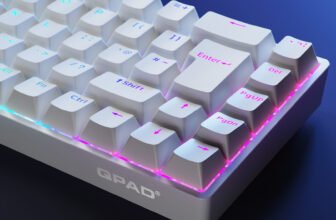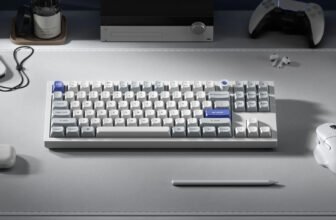Leaked benchmarks have surfaced online, offering an early look at the performance of NVIDIA‘s upcoming RTX 5080 graphics card. Set to debut alongside the flagship RTX 5090 on January 30, the RTX 5080 has been spotted in Geekbench’s OpenCL and Vulkan test results. These preliminary figures reveal notable gains over the RTX 4080 but suggest the GPU may fall short of surpassing the current-generation RTX 4090.
The tested RTX 5080 was an MSI model identified as MS-7E62. The benchmarking setup featured AMD’s Ryzen 7 9800X3D processor, a popular choice among gaming enthusiasts, paired with an MSI MPG 850 Edge TI Wi-Fi motherboard and 32 GB of DDR5-6000 memory.
Benchmark Results and Comparisons
In the Geekbench tests, the RTX 5080 achieved a score of 261,836 points in Vulkan and 256,138 points in OpenCL. These numbers represent a 22% performance boost in Vulkan and a 6.7% improvement in OpenCL compared to the RTX 4080. However, these gains are less dramatic when viewed against NVIDIA’s historical performance trends for its 80-class GPUs.


Additional data from Blender Open Data reveals a median score of 9,063.77, positioning the RTX 5080 9.4% higher than the RTX 4080 and 8.2% above the RTX 4080 Super. Despite these increases, the results indicate that the RTX 5080 may not outperform the RTX 4090, a departure from the usual trend where NVIDIA’s 80-class GPUs eclipse the previous generation’s 90-class models.
Specifications and Architecture
The RTX 5080 is built on NVIDIA’s new Blackwell architecture, featuring 10,752 CUDA cores spread across 84 Streaming Multiprocessors (SMs). This marks an upgrade from the RTX 4080, which offers 9,728 CUDA cores. The GPU comes equipped with 16 GB of GDDR7 memory on a 256-bit memory bus, promising faster data throughput compared to the GDDR6X memory used in the 4080.
Performance improvements are also seen in ray tracing and tensor operations. NVIDIA claims the RTX 5080 can deliver 1,801 TOPS in tensor performance and 171 TeraFLOPS for ray tracing, driven by enhanced RT and Tensor cores. These advancements aim to support more demanding workloads in gaming, 3D rendering, and AI-enhanced applications.

A Mixed Picture for Early Expectations
While the benchmark results showcase tangible performance gains, the data also highlights a potential gap in meeting expectations for generational leaps. Historically, NVIDIA’s 80-class GPUs have consistently outperformed the flagship GPUs from the prior generation, but the early numbers suggest the RTX 5080 might struggle to follow this trend.
Caution Ahead of Official Reviews
As with all pre-release benchmarks, the results should be approached with caution. These numbers have not been independently verified, and final performance figures may differ. With the official launch and review embargo lift still weeks away, prospective buyers and enthusiasts are advised to wait for comprehensive reviews to gain a clearer understanding of the RTX 5080’s capabilities and market positioning.
NVIDIA’s next-generation RTX 50 series is expected to set a new standard for gaming and professional workloads, but how the RTX 5080 stacks up against its competitors and predecessors will be closely scrutinized in the weeks ahead.
Sources: DigitalTrends, TruthPhoenixV







